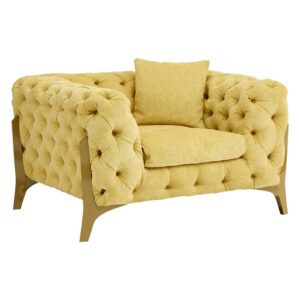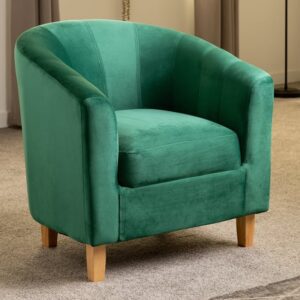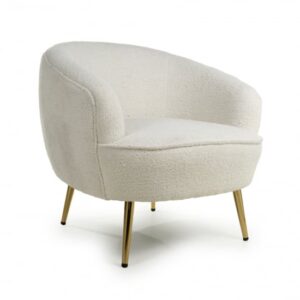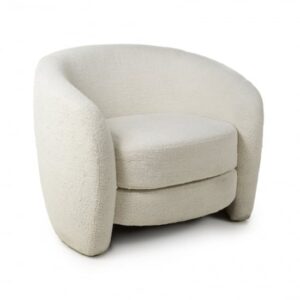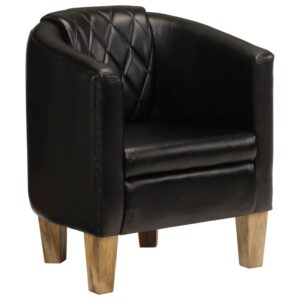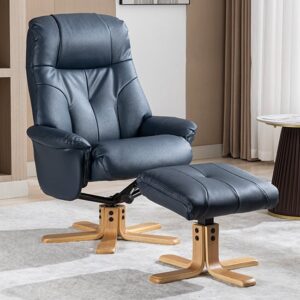The History of Armchairs: From Ancient Times to Modern Day Design
Armchairs are a ubiquitous piece of furniture in modern times, but the history of these chairs goes back centuries. From simple wooden stools to ornate thrones, armchairs have evolved over time to become the functional and stylish pieces we know today. In this blog post, we’ll explore the history of armchairs from ancient times to modern-day design.
-
- Sale!
- Armchairs For Sale
Verna Fullback Fabric Swivel Armchair In Grey
-
£1,223.95£679.95 - More Info
-
- Sale!
- Armchairs For Sale
Verna Scatterback Fabric Swivel Armchair In Grey
-
£1,223.95£679.95 - More Info
-
- Sale!
- Armchairs For Sale
Logion Fabric Swivel Armchair In Black And Grey
-
£1,151.95£639.95 - More Info
-
- Sale!
- Armchairs For Sale
Sharon Fabric Swivel Armchair In Black And Grey
-
£989.95£549.95 - More Info
-
- Sale!
- Armchairs £300 - £500, Armchairs For Sale, Velvet Armchairs
Manichean Plush Velvet Armchair In Grey
-
£899.95£499.95 - More Info
-
- Sale!
- Armchairs For Sale, Fabric Armchairs
Verna Fullback Fabric Armchair In Grey
-
£989.95£549.95 - More Info
-
- Sale!
- Armchairs For Sale, Fabric Armchairs
Verna Scatterback Fabric Armchair In Grey
-
£989.95£549.95 - More Info
View more armchairs here>> Great alternatives to NEXT Armchairs, John Lewis or M&S Armchairs
The History of Armchairs: From Ancient Times to Modern Day Design
The history of armchairs dates back to ancient Egypt, where they were reserved for the pharaohs and high-ranking officials. These chairs were often made of gold and decorated with precious stones and intricate carvings. They were designed to symbolize power and authority and were considered to be status symbols. In ancient Greece, armchairs were also reserved for the elite and were often made of wood and adorned with carved figures.
Middle Ages and Renaissance
During the Middle Ages, armchairs became more common, but they were still considered luxury items reserved for the wealthy. The chairs were often made of oak or walnut and featured intricate carvings and ornate designs. In the Renaissance period, armchairs became more accessible to the middle class, and designs became more elaborate, featuring intricate carvings, gilding, and rich fabrics.
-
- Sale!
- Tub Chairs
Trinkal Velvet Tub Chair In Sapphire Blue With Wooden Legs
-
£305.95£169.95 - More Info
-
- Sale!
- Tub Chairs
Trinkal Velvet Tub Chair In Emerald Green With Wooden Legs
-
£305.95£169.95 - More Info
-
- Sale!
- Tub Chairs
Trinkal Velvet Tub Chair In Burnt Orange With Wooden Legs
-
£305.95£169.95 - More Info
-
- Sale!
- Tub Chairs
Ascoli Polyester Fabric Tub Chair In Moss Green
-
£863.95£479.95 - More Info
-
- Sale!
- Tub Chairs
Ascoli Polyester Fabric Tub Chair In Antique Tan
-
£1,187.95£659.95 - More Info
-
- Sale!
- Tub Chairs
Liege Boucle Fabric Tub Chair In Vanilla White
-
£629.95£349.95 - More Info
-
- Sale!
- Tub Chairs
Petah Boucle Fabric Tub Chair In Vanilla White
-
£629.95£349.95 - More Info
-
- Sale!
- Tub Chairs
Dove Real Leather Tub Chair In Black With Wooden Legs
-
£647.95£359.95 - More Info
View more tub chairs here>> Great alternatives to NEXT tub chairs, John Lewis or M&S tub chairs
18th and 19th Century
In the 18th century, armchairs became more refined, with designers incorporating curved lines and elegant fabrics. The Rococo style was popular, featuring ornate details and whimsical designs. In the 19th century, the Victorian era saw a resurgence of elaborate armchair designs, with chairs featuring tufted backs, floral patterns, and rich fabrics such as velvet and silk.
20th Century and Modern Day
In the 20th century, designers began to experiment with new materials, such as plastic and metal, resulting in new and innovative armchair designs. The Mid-Century Modern movement, which emerged in the 1950s and 60s, brought a focus on sleek and minimalist designs, with chairs featuring clean lines and geometric shapes. The 1980s saw a revival of traditional armchair designs, with a focus on comfort and luxury.
Today, armchairs continue to be a popular and essential piece of furniture in many homes. Designers continue to experiment with new materials and shapes, resulting in armchairs that are both functional and visually stunning. Some modern designs even incorporate smart technology, such as built-in speakers and massagers, to provide a truly immersive experience.
-
- Sale!
- Recliner Chairs
Maida Fabric Swivel Recliner Chair And Footstool In Wheat
-
£593.95£329.95 - More Info
-
- Sale!
- Recliner Chairs
Brixton Fabric Swivel Recliner Chair And Stool In Lisbon Teal
-
£989.95£549.95 - More Info
-
- Sale!
- Recliner Chairs
Delray Fabric Swivel Recliner Chair With Stool In Grey
-
£935.95£519.95 - More Info
-
- Sale!
- Recliner Chairs
Alanya Fabric Dual Motor Riser Recliner Chair In Linen
-
£1,349.95£749.95 - More Info
-
- Sale!
- Recliner Chairs
Rachelle Modern Recliner Chair In Brown Faux Leather
-
£1,349.95£749.95 - More Info
-
- Sale!
- Recliner Chairs
Dox Plush Fabric Swivel Recliner Chair And Stool In Navy
-
£791.95£439.95 - More Info
-
- Sale!
- Recliner Chairs
Weiser Linen Fabric Recliner Chair In Grey
-
£683.95£379.95 - More Info
-
- Sale!
- Recliner Chairs
Radford Leather Electric Recliner Chair In Tan
-
£1,331.95£739.95 - More Info
View more recliner chairs here>> Great alternatives to NEXT recliner chairs, John Lewis or Marks & Spencer recliner chairs
Conclusion
In conclusion, the history of armchairs is a fascinating journey through time, reflecting the evolution of design and societal trends. From the ornate designs of ancient Egypt to the minimalist styles of the 20th century, armchairs have evolved with the times, reflecting changing tastes and design trends. Today, armchairs remain an essential part of interior design, providing both comfort and style to any space.







